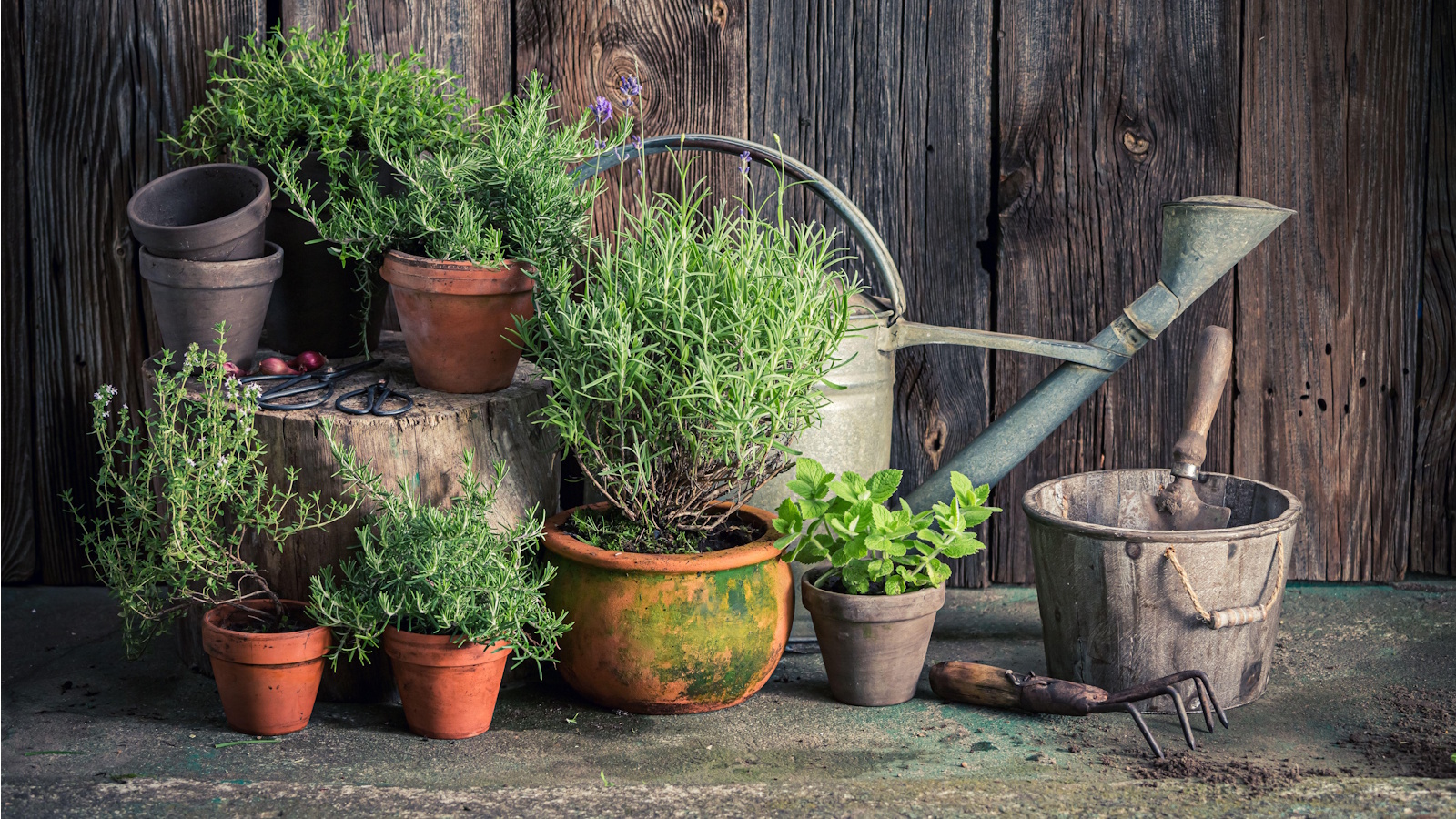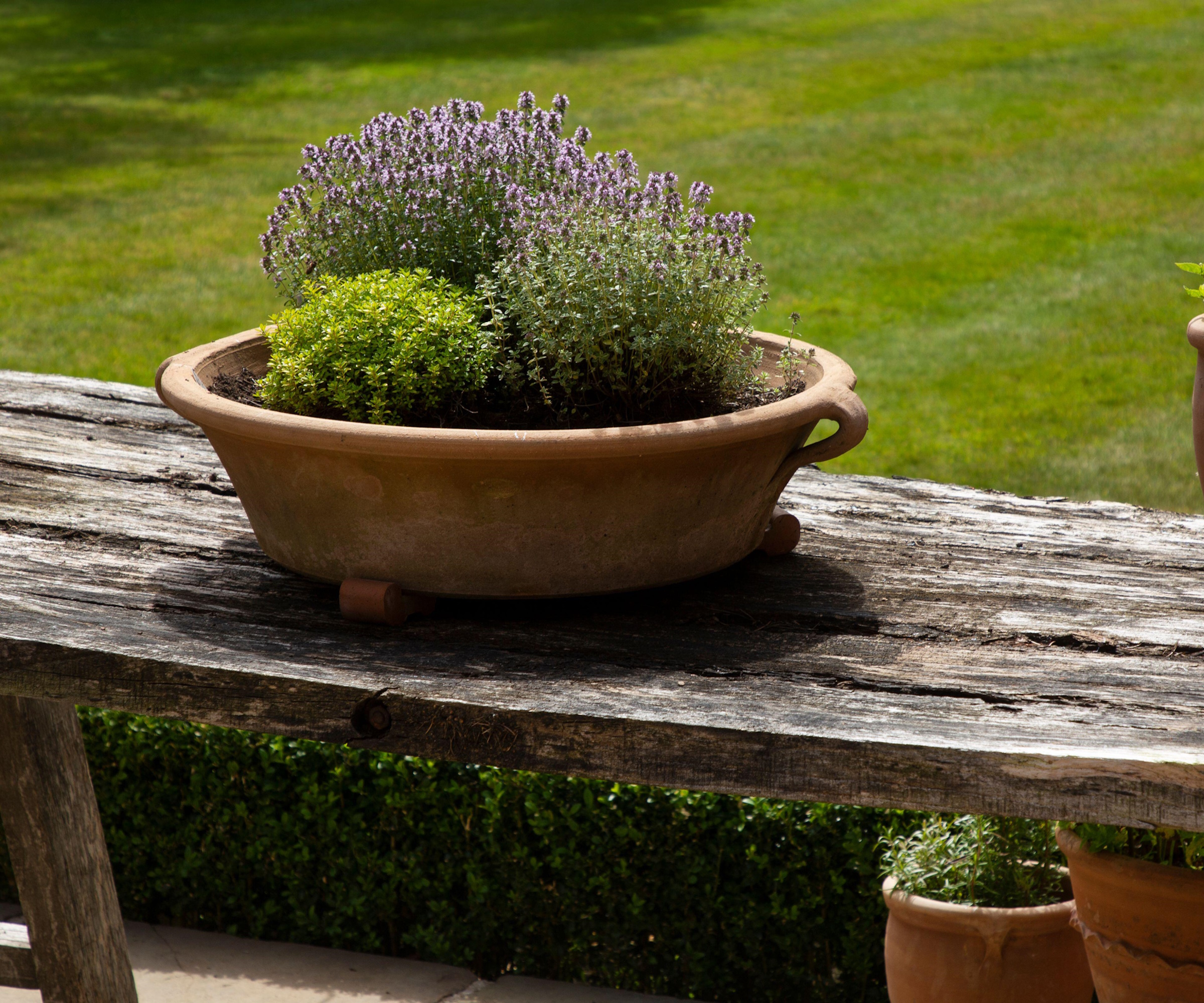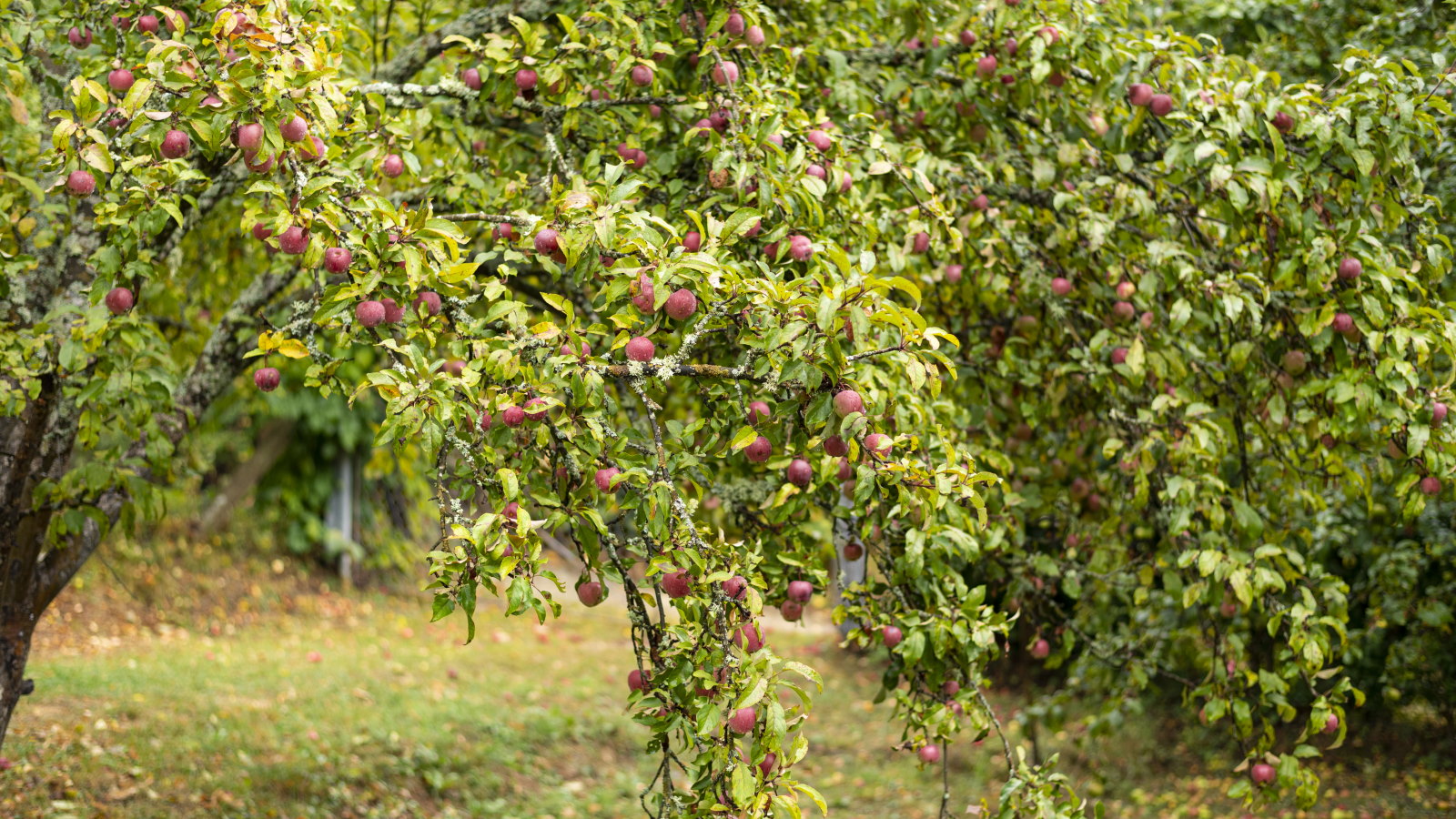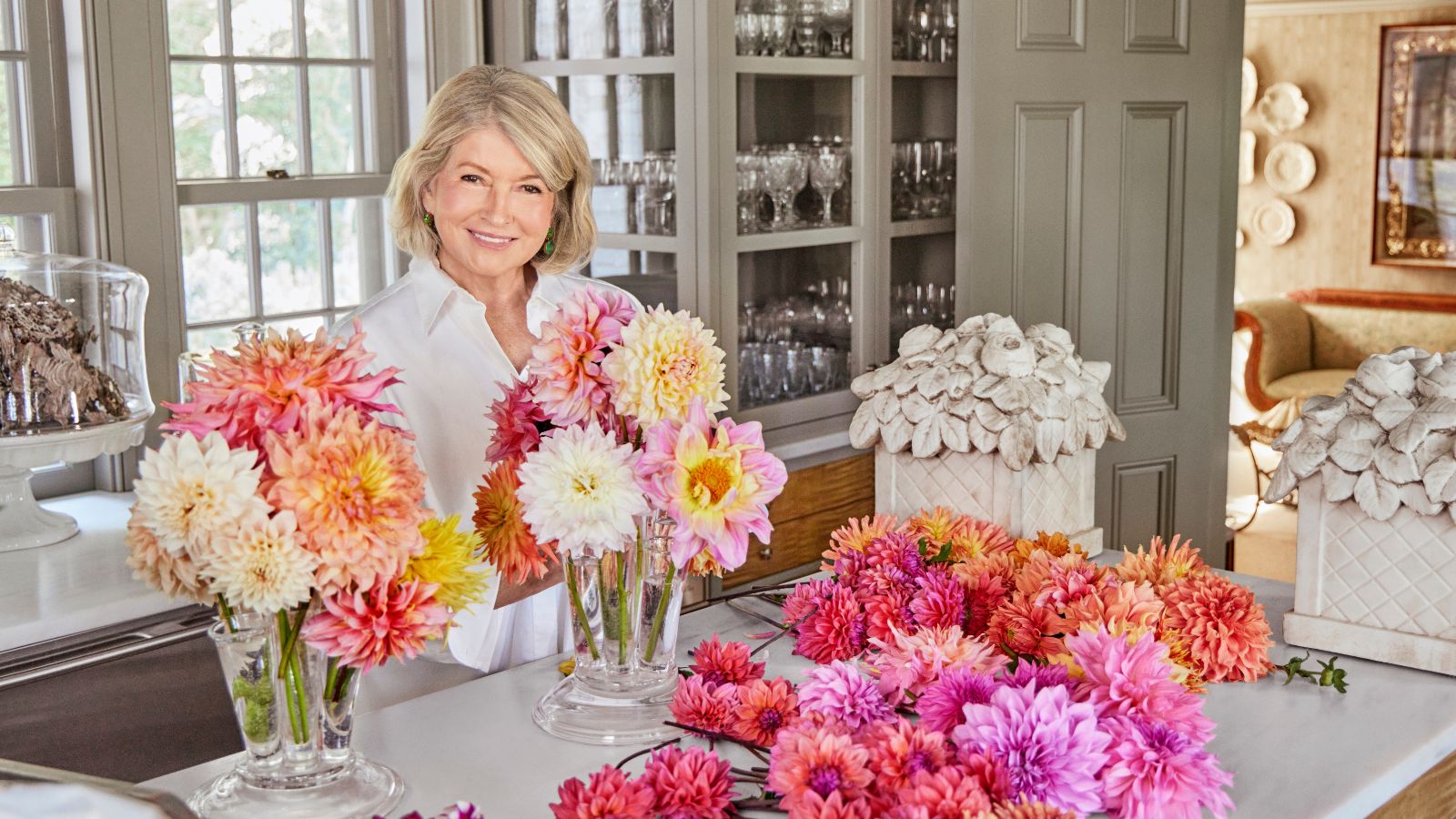Moving herbs outside now could kill them off, warns gardening expert – here's when to do it instead, plus tips for a smooth transition
Placing these tender plants in your yard too early risks their demise from late frost


As a keen indoor gardener, I love to grow herbs on my kitchen windowsill. There's something rewarding about plucking fresh herbs to use as you're cooking. But now that spring has arrived, I'm eager to move my herbs outdoors for some fresh air and sunshine. The one thing I'm questioning: is it too early to move herbs outdoors?
If you have an abundant herb garden, you'll know they need very specific requirements when it comes to temperature, light, and moisture to thrive. That's why it's important to get the timing right when planning to move your indoor herb garden to your yard for spring and summer. Too soon and they may get hit by late frosts.
To ensure I won't put my carefully curated herb containers outside too early, I spoke to a garden expert. Here, she shares her top tips for transitioning herbs outdoors for the warmer months ahead.
When should you move herbs outdoors?

'Most, if not all, herbs are not frost-tolerant, although perennials such as rosemary, oregano, thyme, and parsley are fairly cold-hardy,' notes gardening expert Annette Hird.
While there are some herbs that don't need winterizing, as Annette notes, the majority of herbs need to be brought indoors or covered in winter, especially if you want to keep them productive during the colder months.
To ensure they then continue to be productive into spring, you need to place them outdoors at the right time, after the risk of late frost has passed.
'The best time to move them outdoors is in spring after the last frost date. This will depend on which US hardiness zone you live in,' Annette explains.
Generally speaking, the majority of the US experiences its last frost by late April. To be extra cautious, you could wait until May to grow herbs in pots outdoors. Any earlier is a herb gardening mistake likely to result in your herbs being taken out by late frost.
The best thing to do is keep an eye on your local forecast and identify when the risk of frost has passed. Then, you can start to move herbs outdoors.

Annette Hird has an Associate Diploma in Horticulture and is an urban gardening expert. She has worked as a professional propagator and managed, maintained and improved many urban and rural gardens. She also enjoys growing her own fruit, vegetables, herbs and flowers as well as many different types of ornamental plants.
Top tips for moving herbs outdoors

'Ideal temperatures will vary from species to species,' Annette notes. For example, rosemary plants (from Walmart) do best between 55 to 100°F, while basil plants (from Walmart) prefer between 70°F and 80°F.
'During cold spells, hardy herbs simply go dormant and resume their vigorous growth again in spring,' Annette explains.
'In fact, if you have a protected spot that doesn't get frosted, like a sheltered veranda or patio, putting some of the hardier herbs outdoors in early-spring would be fine,' she adds.
You could even try using a cold frame to provide some warmth and protection - like this cold frame greenhouse from Amazon. In fact, you can grow cold-hardy herbs in a greenhouse through winter, ready to transition outdoors in early-spring.
For tender herbs, it can be useful to acclimatize them for a smoother transition outdoors.
To do this, place herbs outdoors during warmer daytime hours, being mindful of their lighting requirements so they don't suffer leaf scorch. You can then bring them indoors at night.
Once night temperatures reach that specific herb's preferred temperature range, you can leave them outdoors for spring and summer. Use this outdoor thermometer from Amazon to identify this.
FAQs
Can you plant herbs directly in the ground?
While it is possible to plant herbs directly in the ground, many gardeners have more success when growing herbs in containers and raised garden beds. This is for a few reasons: herbs need good drainage, pots keep them contained, and you can move potted herbs under shelter for winter. Whether you choose to plant herbs in the ground or a container, make sure to use a nutrient-rich, well-draining soil, like the Miracle-Gro Vegetables & Herbs Garden Soil (from Lowe's).
Once it's warm enough to start growing herbs outdoors, why not try making a herb planter? This is a great way to pair herbs that grow well together and make your herb garden a feature in your yard.
'Just remember to bring them back indoors just before the first expected frost date in the fall. Or, for more tender plants, as soon as temperatures drop below the plant's preferred range,' says Annette.
Sign up to the Homes & Gardens newsletter
Design expertise in your inbox – from inspiring decorating ideas and beautiful celebrity homes to practical gardening advice and shopping round-ups.

Tenielle is a Gardens News Writer at Homes & Gardens. She holds a qualification in MA Magazine Journalism and has over six years of journalistic experience. Before coming to Homes & Gardens, Tenielle was in the editorial department at the Royal Horticultural Society and worked on The Garden magazine. As our in-house houseplant expert, Tenielle writes on a range of solutions to houseplant problems, as well as other 'how to' guides, inspiring garden projects, and the latest gardening news. When she isn't writing, Tenielle can be found propagating her ever-growing collection of indoor plants, helping others overcome common houseplant pests and diseases, volunteering at a local gardening club, and attending gardening workshops, like a composting masterclass.
You must confirm your public display name before commenting
Please logout and then login again, you will then be prompted to enter your display name.
-
 Plants never to grow next to fruit trees
Plants never to grow next to fruit treesExpert advice on which plants to keep away from fruit trees to encourage a healthy harvest
By Jacky Parker Published
-
 Martha Stewart's tips for arranging daffodils are unbelievably simple and effective – it's the only flower advice you need this springtime
Martha Stewart's tips for arranging daffodils are unbelievably simple and effective – it's the only flower advice you need this springtimeMartha shows us that we can create gorgeous bouquets of this seasonal flower by simply trimming the stems and placing them in specific vases
By Hannah Ziegler Published